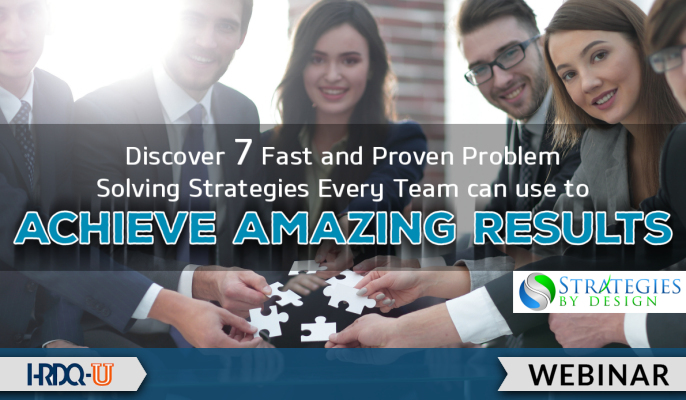
Let’s face it: time is one of the most precious commodities we all cherish. Yet, we find ourselves in a race against ourselves. Looming deadlines, multiple priorities, and hybrid teams all tug on us. We find ourselves in endless, unproductive meetings trying to solve challenges and problems. Meeting experts report that people can spend more than 10 hours a week in some meetings focused on solving workplace challenges. To add more pain to our current reality, many of us feel that the topic of how problem-solving strategies and approaches are facilitated is often out of our control. Our approach to problem-solving strategies and collaboration needs to change.
Join us for our interactive webinar, where we will share seven fast and proven problem-solving methods that move teams from overload to action. You will gain insights, approaches, and frameworks to apply immediately to your work.
Judith Cardenas, Ph.D., is the President and CEO of Strategies By Design, a consulting firm specializing in behavior design and innovation. She holds a Doctorate in education administration and training and leadership development from Harvard. With certifications in corporate coaching, ROI, innovation, and service design, she has served clients such as the UN, U.S. Navy, and MIT.
At Strategies By Design Group, we specialize in supporting Leaders and Organizations that are ready to innovate faster and more successfully – and want to design better solutions or experiences for their customers and employees. We help foster the culture of innovation needed to stay competitive in today’s modern, ever-changing market, apply innovative techniques and approaches to achieve immediate engagement and growth, and enhance the connection between behavior design and human-centric design.
Learn more at: www.strategiesbydesigngroup.com
“One of the more effective webinars I’ve joined. Gave valuable techniques in less than an hour. I’m excited to try them out!”
– Julie M.
“I found this webinar to be very informative with lots of good information.”
– Francene H.
“The information shared in this webinar is easy to understand. Techniques are simple to implement but can be powerful in making sustainable changes.”
– Pearl P.

Sign up for more as a member of HRDQ-U
HRDQ-U offers much of its learning content free to visitors, including live and select webinars, blog posts, and more, with new events and posts shared every week. However, there is much more learning available. You can access our complete library of on-demand webinars and other training events and content by simply signing up.